FAREWELL, PORTUGAL
Our adventurous friend and the Countess of Cascais
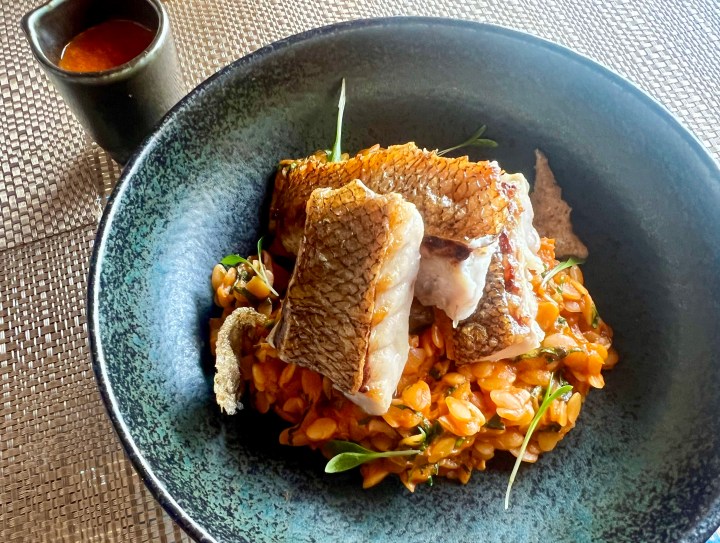
Three decades in the making, the trip we thought might never happen finally became a reality. Sometimes a journey to places you’ve never seen is far more than merely a holiday.
The journey begins long before we embark on it; in the late 1960s, a young woman from Pietermaritzburg moves to Lisbon and Cascais with the Mozambican man who came into her life and changed it so much.
She’s a true adventurer, never hesitating to start out on new paths that will take her who knows where. Her intrepid spirit rewards her with a rich and fascinating life, some of it the stuff of legends. But she is rather private, so we won’t go into all of that.
By the early 1980s, she is in Cape Town, flying solo, where she renews an old schooldays friendship. The adventuress is Maureen Jardim, née Cunningham. We call her Maus. Her friend is Diane, my wife. She quickly becomes my friend too.
By mid-decade, Maus is off to Europe again, and after some time has settled once more in Cascais. In the Nineties, she visits us again and makes us promise: come and visit me in Cascais, you’ll love it.
We promise.
Between 2002 and ’06 we’ve moved abroad ourselves, to Chichester in West Sussex. She visits us there. Before she leaves, she makes us promise: you still haven’t visited me in Cascais. When will you come? I want you to see my life, meet my friends.
We promise.
By 2010, we’ve been back in Cape Town for two years after a strange sojourn in Sutherland. Maus returns to South Africa and stays for a few years this time, living in Cape Town, in Joburg, in Pietermaritzburg. We see more of her than ever before. And before she leaves yet again to return to the life she loves in Cascais, she makes us promise.
Visit me.
We will, promise.
And another entire decade rolls by.
Only in 2023, approaching three decades since that first promise, do we finally fulfil it.
To the amazement of many people, we book flights with the Angolan airline, TAAG. You get That Look when you tell people, as if you’ve said you’re flying Air Darkest Africa with mange-ridden chickens in cages in the seat next to you and smelly goats roaming up and down the aisle.
There are grim warnings about the condition of Luanda airport, where you’ll be grounded for hours between flights. Google and YouTube only make matters grimmer. Videos abound of Americans and Europeans bemoaning the awfulness of it all, the grumpy ground staff, the surly cabin crew.
Okay, the plane from Cape Town to Luanda, and Luanda back to Cape Town 10 days later, was somewhat on the small and tired side. But the overnight cruise from Luanda to Lisbon in a spanking new Boeing 777-300 was nothing short of splendid. I’ve never had a smoother, more comfortable flight, and there was nothing less than smiling professionalism from the crew.
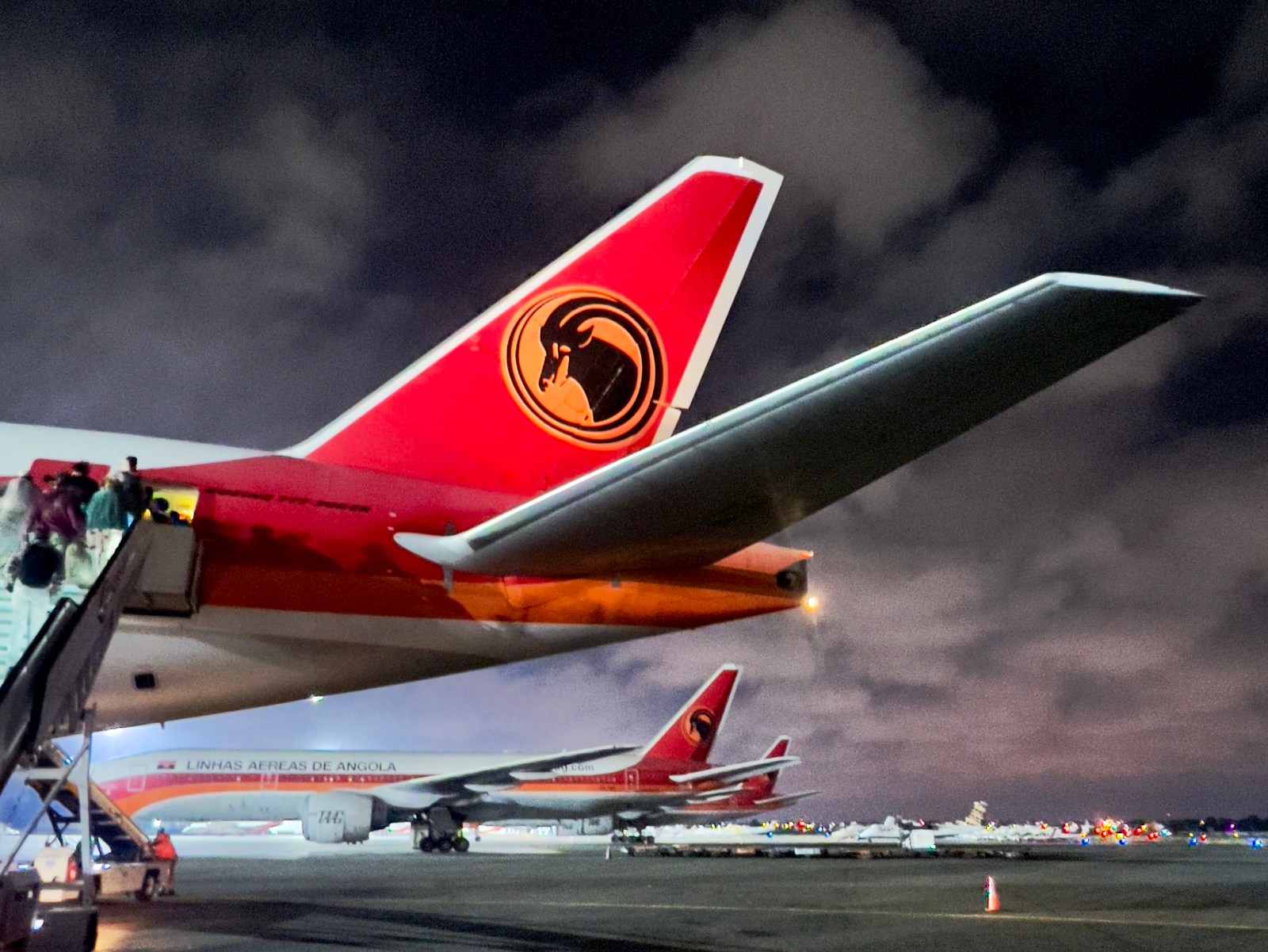
Here we go. The Boeing 777-300 ready to depart Luanda Airport. (Photo: Tony Jackman)
And there she is, smiling and waving at the barrier, calling our names. “Di! Tones! You’re actually here!”
Maus drives us everywhere over the next nine days. She drives like a pro. Everywhere we go, I’m entranced by the fine details: the ubiquitous tiled façades, a strange doorway that seems to hold stories, the ornate street signs.
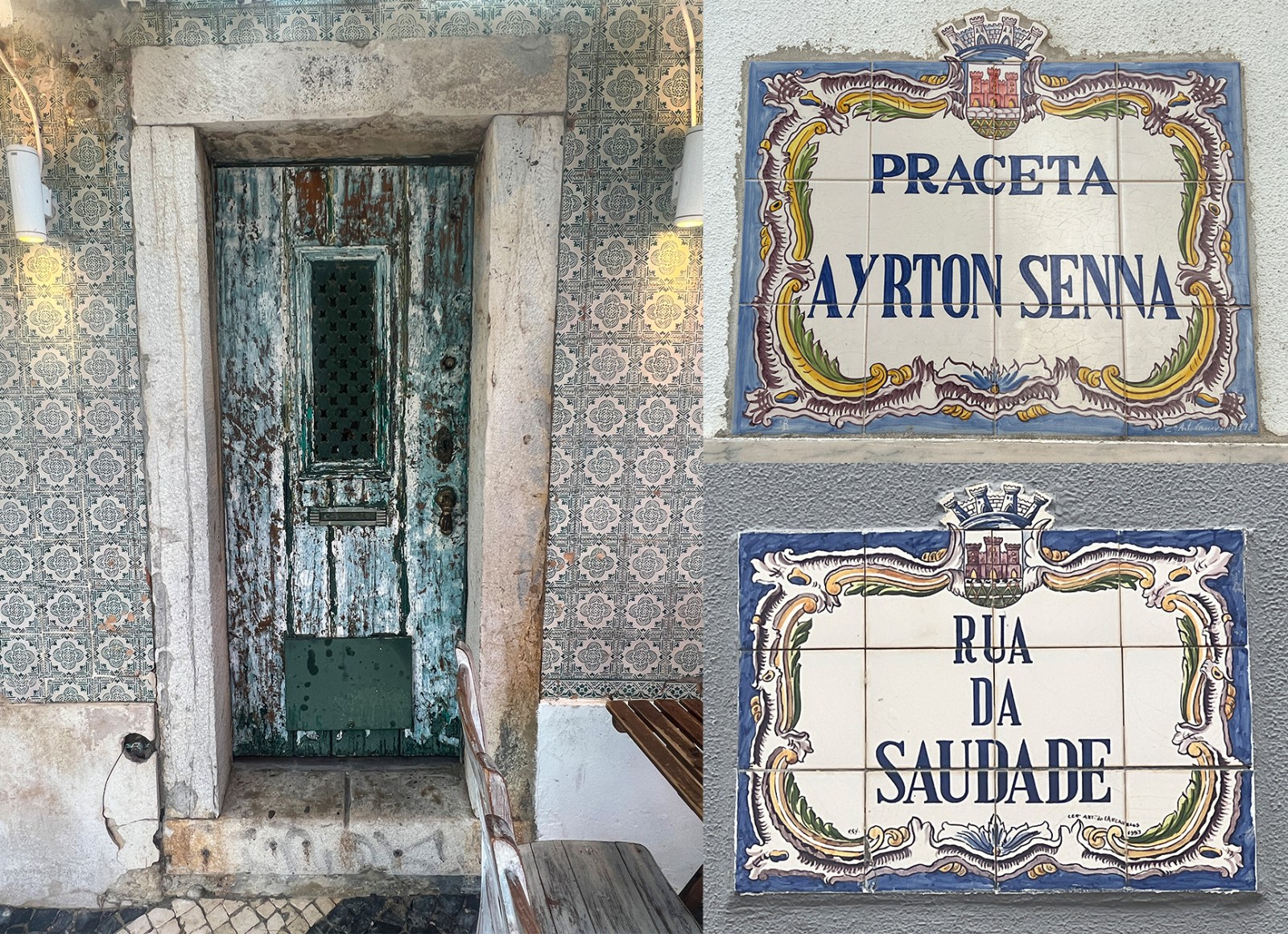
(Photos and collage: Tony Jackman)
Most of the adventures of those next nine days have already been shared (find links to the first three parts below), but all along the way, she has shared her life with us too, her lovely family, her fabulous friends.
Carol. Frances. Ivone. Carmen and Inêz, the two lovely daughters we last saw when they were teenagers, at a dinner party on a big balcony in Green Point, Cape Town, piles of prawns on the table. Inêz has a lifestyle studio in Lisbon. Carmen was once PA to a former prime minister of Portugal; we meet her in a little café late one afternoon because she had been unable to join the rest of the family a few nights earlier. Inêz had come to dinner in Maus’ apartment that evening when we ate mounds of prawns like we did back when we were all younger, with her friendly, courteous boys Mateus and Sebastião.
Eating prawns is just what Portuguese coastal people do. If breakfast is toasted croissants with cheese and ham, supper is most likely to include prawns. There is no escape for a Portuguese prawn. Your days are surely numbered if your habitat is these Atlantic waters.
We meet her old friend Carol Ribeiro on the second night, and again at a restaurant in Carcavelos between Lisbon and Cascais a few nights later.
In Sassoeiros, which reminds me of Sea Point, I order the espetada de lombinho de porco com bacon e farinheira (pork loin kebab with bacon and a delicious local sausage called farinheira). It is my only espetada in Portugal, very different from any I’ve eaten at home. I enjoyed it but I do prefer the Madeiran idea of an espetada, with lots of bay leaves, garlic and coarse salt.
We only meet Ivone on the last morning, when we return to the gypsy market, soon to start the trek home. Strangely, when she hears my name Ivone remembers reading and liking my stories before she left Cape Town for Portugal. In the late Seventies. I still cannot fathom how; I can scarcely remember anything I wrote back then.
Not least of Maureen’s friends is the Countess of Cascais. Now, I should quickly explain that she is not really the Countess of Cascais – that’s just my fanciful idea of her – but she is a countess, and she does live there, in a sun-blessed villa just outside the Portuguese coastal resort. She is Frances Stolberg, it is only our second day in Portugal, and she has asked Maureen to bring us to lunch.
I’m as nervous as a kid on his first day of school as we head out of town into the country. Don’t stress, says Maus en route there, she’s lovely, I know you’ll love her.
Through ancient gates and up a path, glancing left at the formal garden laid out decades ago by the woman we are about to meet, the house comes into view, we park, and a diminutive lady wearing a broad headband appears in the doorway, beaming at us. She’s smart, she’s grand, she’s naughty and twinkly and outrageous with her storytelling.
Frances is actually Scottish and proudly so, though she has been in Portugal for 35 years. Within minutes of us meeting her, on the verandah of her home, she leans forward with her mischievous smile, eyes a-twinkle, and says, “My brain is run by the unions. You never know when it’s not going to be working.”
The stories told at lunch in a private home are not for public sharing, but suffice to say that they were rich, funny and often daring. There was even one moment deserving of a jaw-dropping turn in a movie plot, but family is involved, so that’s off the table, sorry.
These disparate people from different continents and worlds, over the next three hours, fell into friendship and remain so. We WhatsApp like old mates. And I’ve sent her my book. Would these friendships have happened had we first visited Maus in Cascais 25 years ago? Would we have ended up living there? I suspect we would, and that by now we would have known Frances for all of those years and be as familiar with the language as Maus is. She speaks Portuguese as her first language; even her English has a faint Portuguese accent.
Frances’ cook has prepared a two-course lunch to be served by Victor, who is butler indoors and chauffeur when Frances ventures out.
Laughter cracks through the room. I keep having mental flashes, while we’re at her table, of our late eccentric friend John Caviggia, with his theatrical ways and his elegant dinners in the grand old Camps Bay dining room lined with his theatre designs and family memorabilia.
Victor serves our lunch the way they do in Downton Abbey, while the colonials try to behave. The prawns in a creamy sauce are lovely, served with a crisp salad, and I accept the proffered seconds. The dessert is a joy. The cook’s decadent chocolate tart, topped by a slice of abacaxi, the super-sweet Brazilian pineapple popular here.
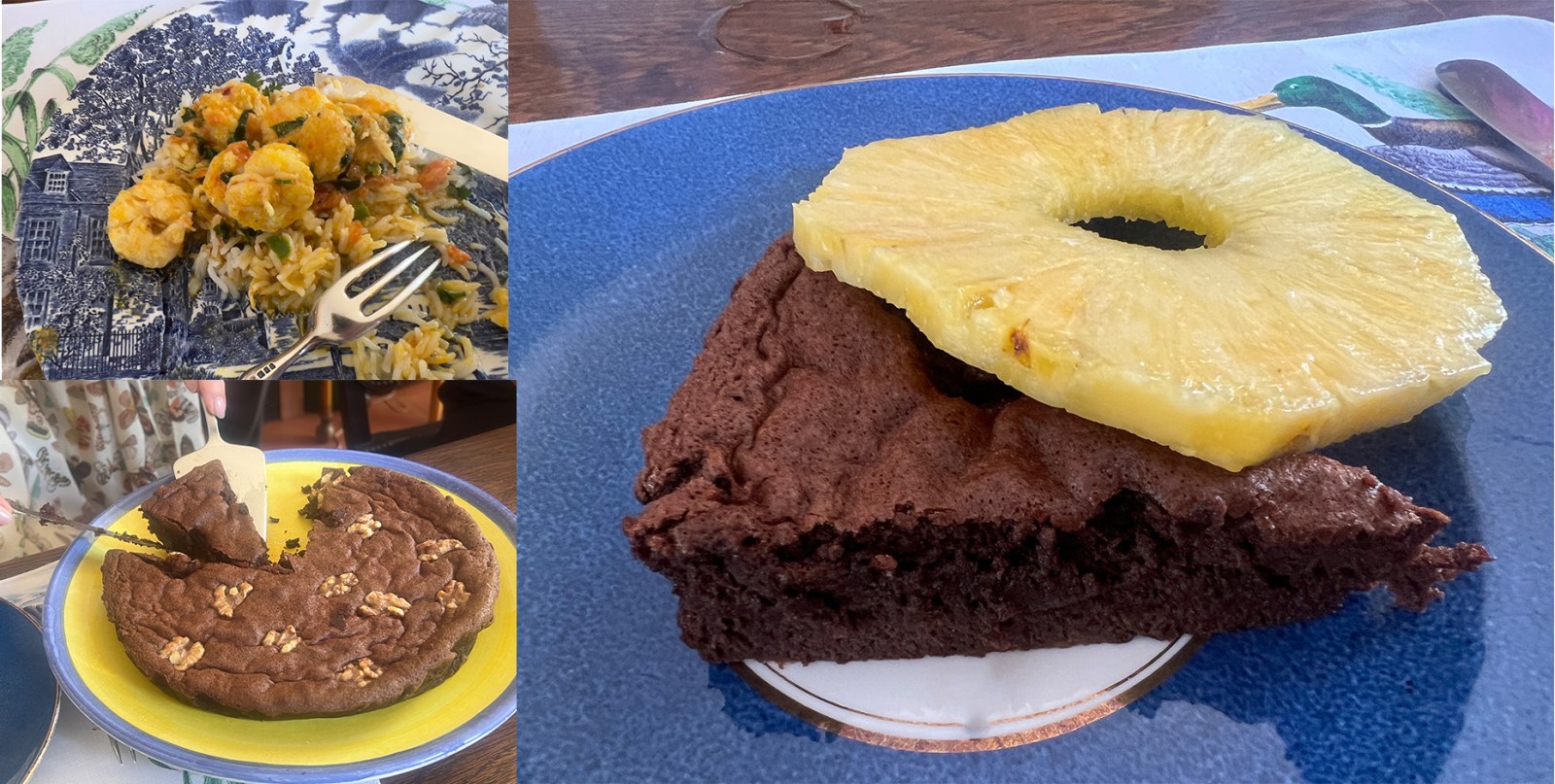
Dreamily creamy prawns. Divine chocolate tart with abacaxi. (Photos: Tony Jackman)
Then. “I’ve decided I would like to take you to lunch,” Frances says, after having told us about a new restaurant that’s been opened by a chef who has Michelin-starred restaurants in Lisbon. A date is set for the following Tuesday.
We say reluctant farewells with many hugs and are off back to Cascais. But we’ve barely settled back in Maureen’s flat when her mobile rings. It’s Frances, inviting us to come back for sundowners. Within half an hour we’re back and drinking wine as the sun dips.
Her artist friend Richard Wall is there, an English émigré. Richard has brought some of his paintings along to show us. So beautiful, such magnificent use of bold colour, that I wished it were possible to take one home.
Frances shows me a treasured book by Lee Miller, the legendary American model, fashion photographer and surrealist, A Life with Food, Friends and Recipes. It seems more than apposite.
There’s twilight and old-fashioned romance in the air. It feels like we’ve slipped into Hemingway’s Côte d’Azur. F Scott Fitzgerald could walk in at any moment.
A week of many wonders later, Tuesday finally dawns and it’s time for lunch with Frances, but her choice is not open that day. Unfazed, she books us a table for four instead at the elegantly grand Fortaleza do Guincho hotel and restaurant, overlooking a grey, choppy sea. It’s a Relais & Château hotel and the restaurant has one Michelin star which it has held since 2001.
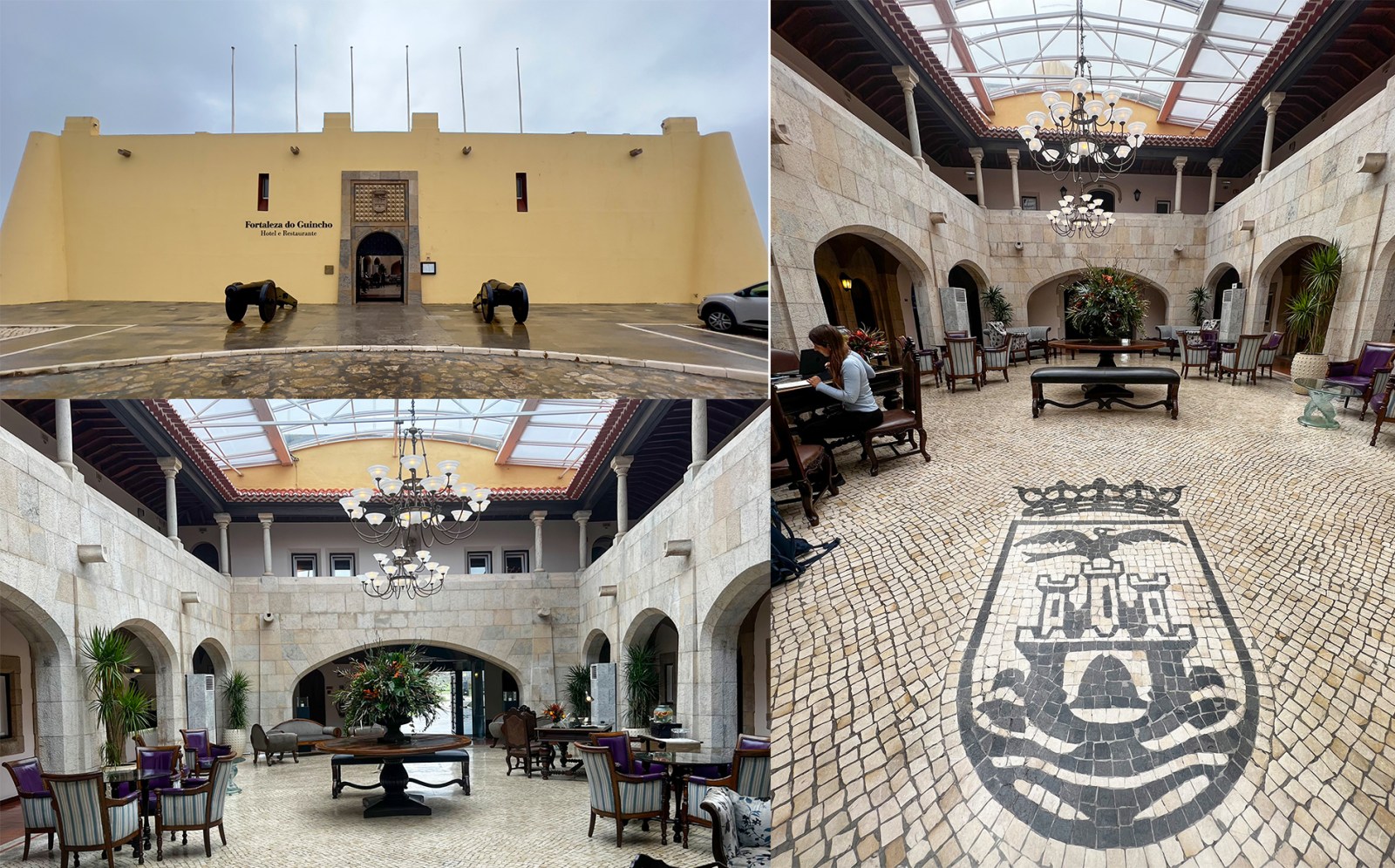
Fortaleza do Guincho, inside and out. (Photo: Tony Jackman)
The restaurant is fine without being pretentious, grand without being ostentatious. Service is understated but straightforward and pleasant. No stuffiness about it at all. This is something that some of the finer South African high-end restaurants could learn from.
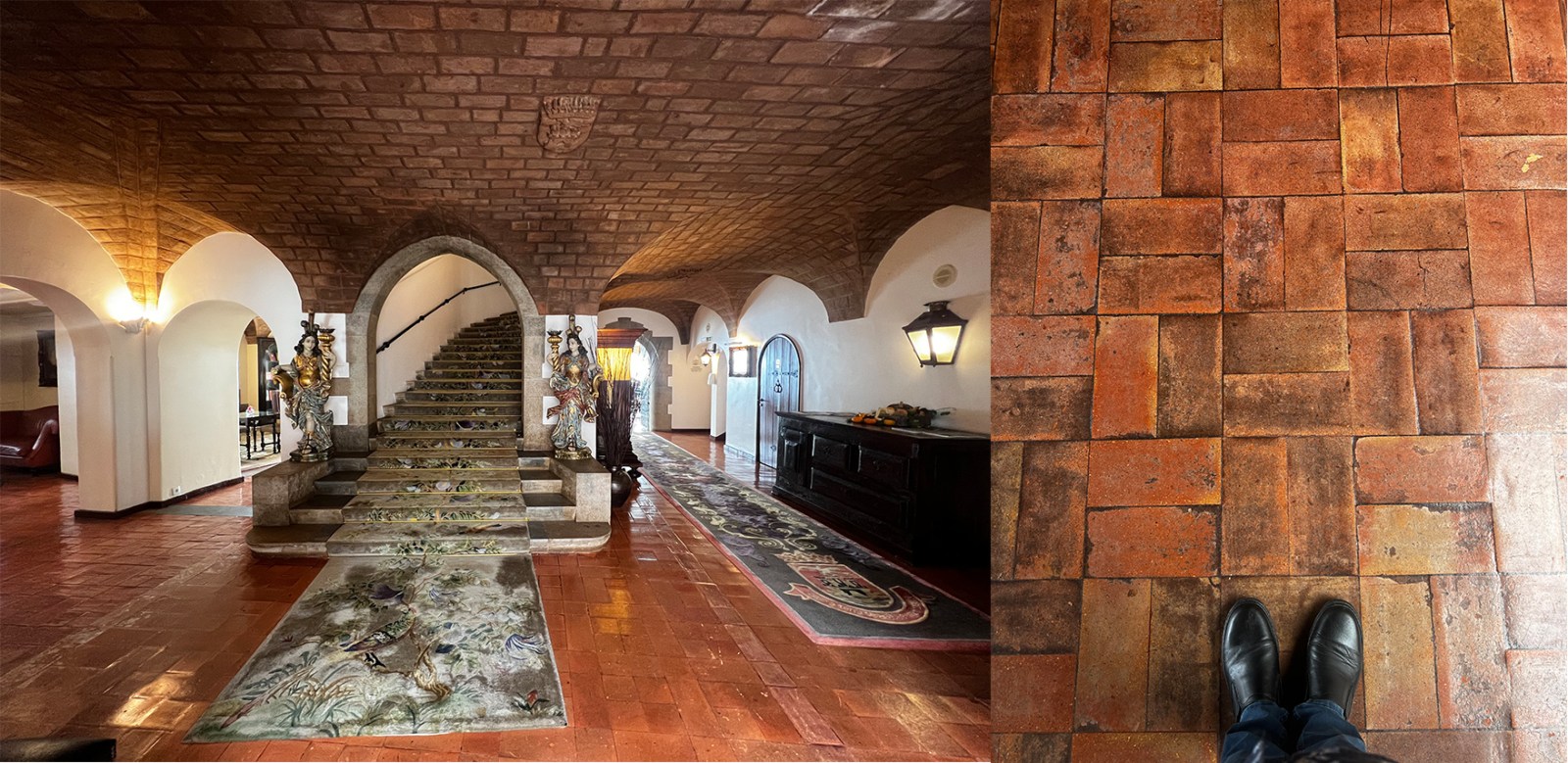
Ancient walls and calçadas at Fortaleza do Guincho, one example of the magnificent paving tiles found in Portugal. (Photos and collage: Tony Jackman)
The light is perfect for photography indoors, at our table near the giant window almost touching the Atlantic. Just look at the light on my escolar and pevide in the main picture. Escolar is a fish from the Açores (Azores). Pevide is a Portuguese style of tiny pasta that reminds me of orzo, lest we thought that all pasta came from Italy. It’s soft and sensuous and is a part of a traditional pasta dish called massada.
It is the finest dish I eat during the entire holiday.
“The one muscle that works is my tongue,” Frances quips at the table alongside me in one of many delightful moments over lunch.
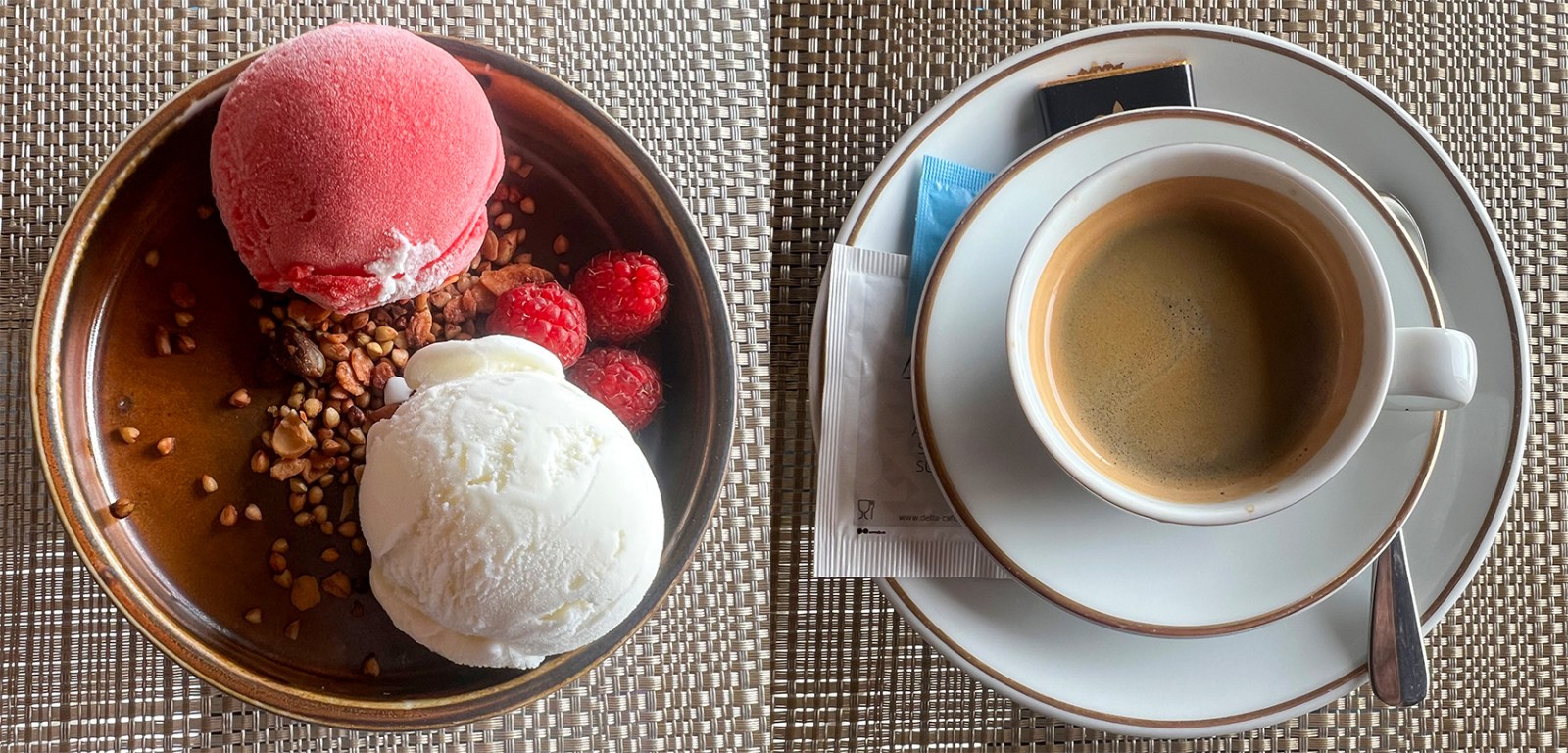
We order a variety of perfect ice creams, followed by proper Portuguese coffee, and they take their coffee very seriously here. (Photos and collage: Tony Jackman)
Too soon, Victor arrives in the black Mercedes to drive her home, but Maus, knowing that we’ll be heading home the next day, is not done yet. We’ve had no time to see Sintra yet, except for that flit to Cabo da Roca directly from the airport on our first day a week earlier.
This drive takes you through the most gorgeous, verdant terrain imaginable, past cliffside villages, castles and houses with their vintage and history embedded in their bones. There’s no chance of anything being more than fleeting and the clenched hope that you will come back to soak up much more than time now allows.
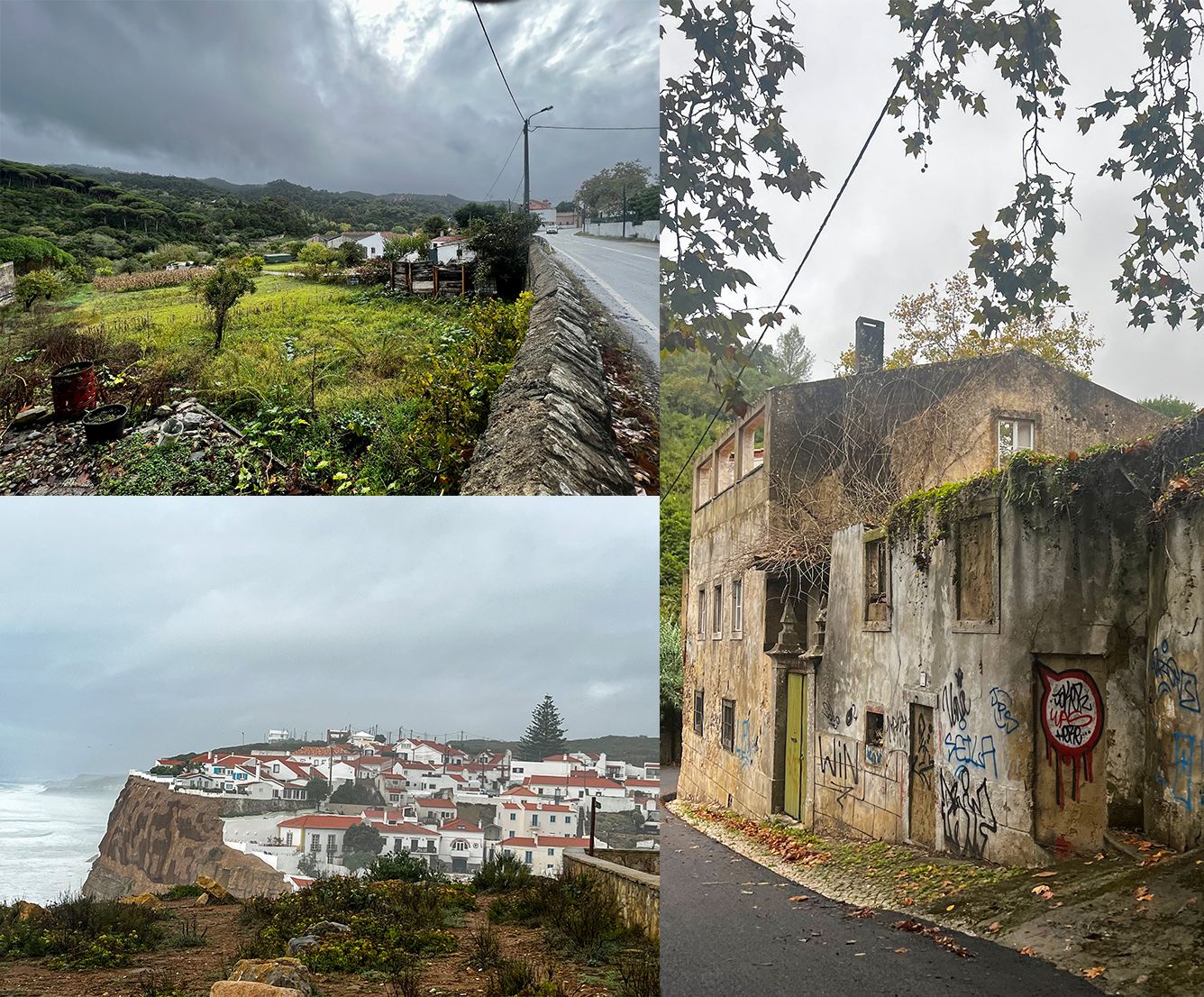
Moods of Sintra. (Photos and collage: Tony Jackman)
There’s time for one more dinner too, and after a rest at her flat, we’re back in the car. It’s at Páteo do Petisco not far from her flat, which Carmen had recommended when we met for coffee.
It’s full circle now. The chouriço assado has already been flamed in alcohol for us when it arrives, though we’d know what to do thanks to that first lunch at the windmill near Cabo da Roca. And chico frito: cuttlefish again, but not like at Grelhas a week earlier. These are strips, just like calamari, crumbed and fried.
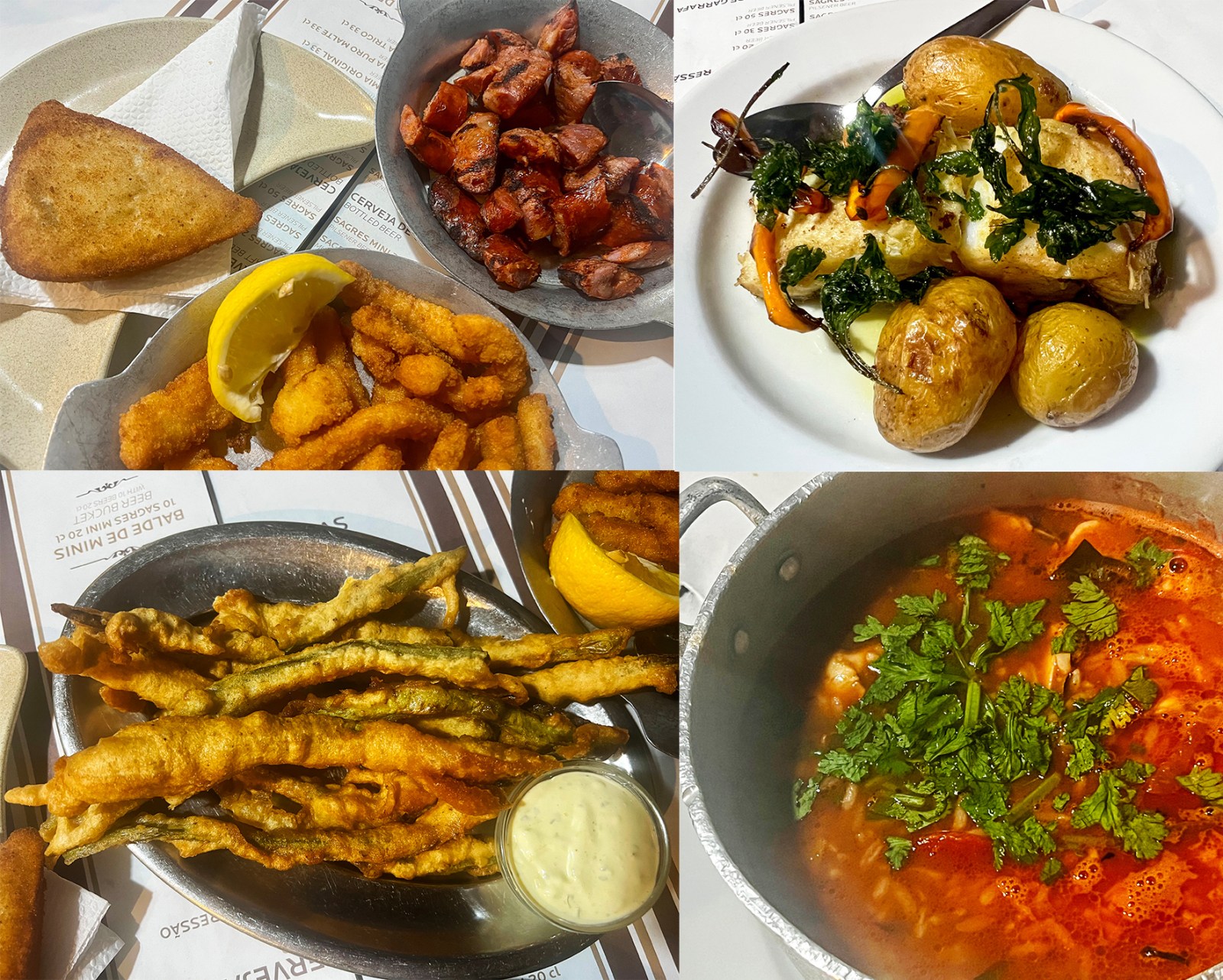
Clockwise from top left: chouriço assado, chico frito and a suckling pig pastel (top left corner); bacalhau a chefe; arroz de polvo, and peixinhos da horta. (Photos and collage: Tony Jackman)
There’s a rissol de leitão: suckling pig parcel. A big metal pot is full to the brim of arroz de polvo, a stew of octopus and rice with plenty of tomato. There’s bacalhau a chefe: codfish done the chef’s way. It’s a pleasingly simple stew with baby potatoes and julienne carrots, garnished with deep-fried coriander. I learn that coriander is everywhere in Portuguese cooking. I had not known that. And there’s peixinhos da horta (“small fish from the garden”) but they’re really green beans, battered and fried.
Now there’s no putting off the inevitable. There’s that final pre-travel sleep that you hope will be a good one, knowing you’ll be on a long-haul flight the next night.
But there’s one more small delight before it’s all over. Back at the gypsy market, we’re with Maus and Ivone at a sunny table when a longhair American saunters over. He looks like he’d be played by Sam Elliott in a movie; maybe hung out in Haight-Ashbury once upon a time. He gives us a takeaway container of fresh oysters. They’re on ice, with wedges of lemon.
He’d got into conversation with the oyster trader at the peixaria next door, and the guy had given him a whole stack of oysters, more than he could manage. He’s an academic émigré and he joins us for a while. He tells us he lives in Cascais because he can’t live in America any more, “the way it is now”.
A fleeting new friend, now here, now gone. One of life’s little surprises.
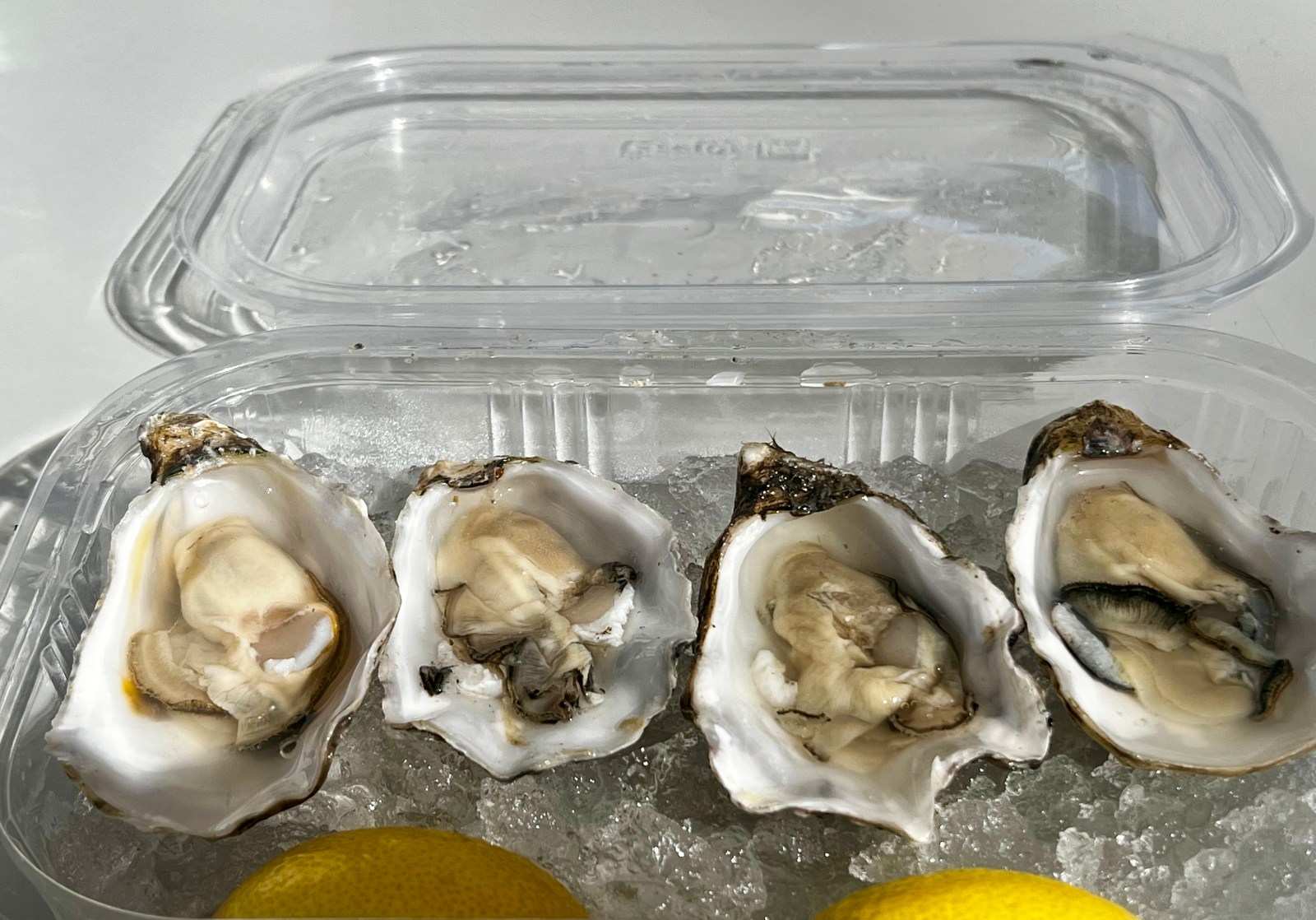
A gift of oysters. (Photo: Tony Jackman)
And a gift of oysters, fresh, on ice. A taste of the Atlantic brine to linger on the palate while we fly home. DM
Read part 1: Pastéis de nata, tremors and saudade at the Gateway to History
And part 2: Bochechas and human bones in the land of the Black Pig
And Part 3: Here where the bounty of the sea meets the beauty of the land





Thank you for sharing your trip with us. I have to get to Portugal someday. Sounds awesome!
Goodness! Just lovely Tony!
Went for a two day conference to Lisbon, and three day trip to Oporto.
Remember it as a month of sights, experiences, and tastes and sheer joy.
Have so enjoyed this enlightening series on Portugal. Thank you.